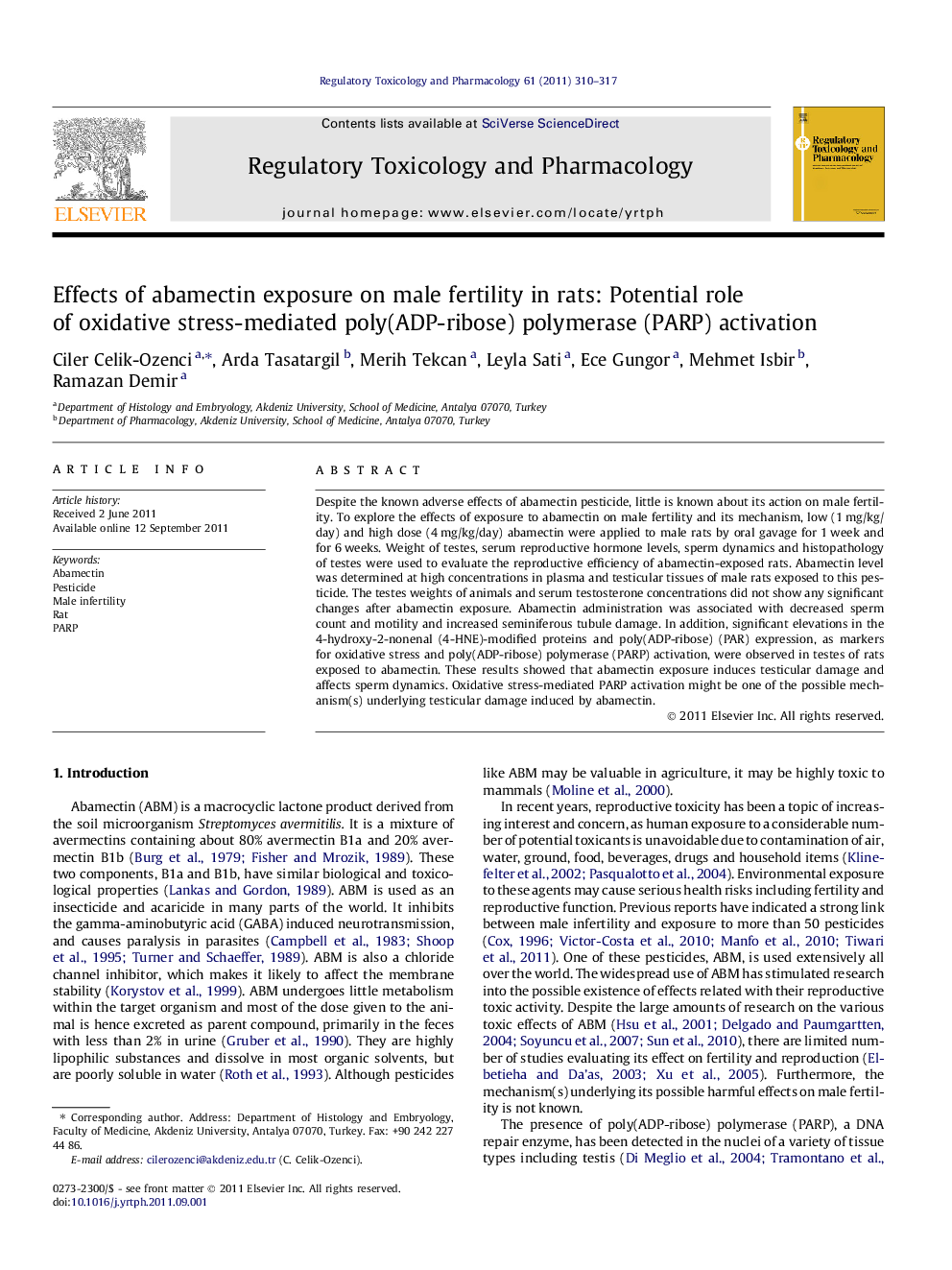| Article ID | Journal | Published Year | Pages | File Type |
|---|---|---|---|---|
| 5857382 | Regulatory Toxicology and Pharmacology | 2011 | 8 Pages |
Despite the known adverse effects of abamectin pesticide, little is known about its action on male fertility. To explore the effects of exposure to abamectin on male fertility and its mechanism, low (1Â mg/kg/day) and high dose (4Â mg/kg/day) abamectin were applied to male rats by oral gavage for 1Â week and for 6Â weeks. Weight of testes, serum reproductive hormone levels, sperm dynamics and histopathology of testes were used to evaluate the reproductive efficiency of abamectin-exposed rats. Abamectin level was determined at high concentrations in plasma and testicular tissues of male rats exposed to this pesticide. The testes weights of animals and serum testosterone concentrations did not show any significant changes after abamectin exposure. Abamectin administration was associated with decreased sperm count and motility and increased seminiferous tubule damage. In addition, significant elevations in the 4-hydroxy-2-nonenal (4-HNE)-modified proteins and poly(ADP-ribose) (PAR) expression, as markers for oxidative stress and poly(ADP-ribose) polymerase (PARP) activation, were observed in testes of rats exposed to abamectin. These results showed that abamectin exposure induces testicular damage and affects sperm dynamics. Oxidative stress-mediated PARP activation might be one of the possible mechanism(s) underlying testicular damage induced by abamectin.
⺠We have investigated the effect of abamectin exposure on male fertility in rats. ⺠Abamectin exposure induces testicular damage and affects male fertility. ⺠Oxidative stress-mediated PARP activation might be one of the possible mechanism(s).
